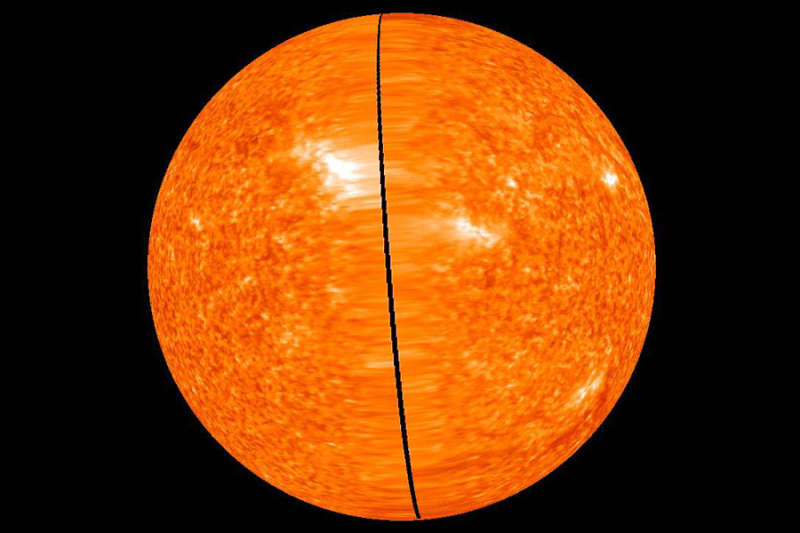
|
Credit & Copyright: STEREO Project,
NASA
Explanation:
For the first time, the entire Sun is being imaged all at once.
This has become possible because the two
STEREO satellites orbiting and
monitoring the Sun are now on opposite sides of the Sun.
The two satellites have been
drifting apart,
as expected, since their
launch in 2006, since one
satellite orbits slightly closer to the Sun than the other.
The above image shows nearly the entire Sun as it appeared one day last week, a
few days before maximum exposure.
Yesterday, the dark gap in the center closed completely, and
STEREO was able to beam back to Earth full 360 degree images of the
closest star.
Full solar images are useful scientifically for a number of reasons, including catching
rapidly evolving
flares,
coronal mass ejections,
tsunamis, and
filaments, no matter where they occur on the Sun,
as well as monitoring days-long
sunspots and
active regions without losing them as they rotate out
of view.
Even though the
STEREO satellites
will continue to drift apart at about 44 degrees per year,
Sun-staring
instruments on or near the Earth will augment them to provide a full
view of the Sun for the next several years.
Students (young and old):
See free lectures on astronomy
|
January February March April May June July August September October November December |
| ||||||||||||||||||||||||||||||||||||||||||||||||
NASA Web Site Statements, Warnings, and Disclaimers
NASA Official: Jay Norris. Specific rights apply.
A service of: LHEA at NASA / GSFC
& Michigan Tech. U.
Based on Astronomy Picture
Of the Day
Publications with keywords: stereo - Sun - satellite
Publications with words: stereo - Sun - satellite
See also:
- APOD: 2025 December 7 Á The Sun and Its Missing Colors
- APOD: 2025 May 21 Á International Space Station Crosses the Sun
- APOD: 2025 March 16 Á Venus and the Triply Ultraviolet Sun
- APOD: 2024 September 2 Á A Triangular Prominence Hovers Over the Sun
- APOD: 2024 August 18 Á A Solar Prominence Eruption from SDO
- APOD: 2024 August 4 Á Gaia: Here Comes the Sun
- APOD: 2024 July 28 Á Sun Dance
